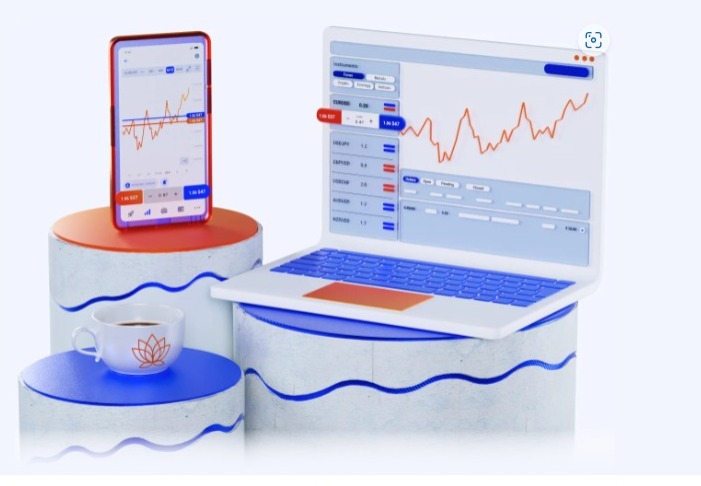IPO (Initial Public Offering)

An IPO is a process through which a privately held company raises capital by issuing stocks and bonds to the public for the first time.
Key Characteristics
- First public issue of shares
- Listing on stock exchange (e.g., NYSE, NASDAQ)
- Raises capital for expansion, debt repayment, or liquidity
- Opens ownership to public investors
- Company becomes publicly traded
IPO Process:
- Filing (S-1) with regulatory bodies (e.g., SEC)
- Due diligence and audit
- Setting IPO price and date
- Roadshow (marketing to investors)
- Listing on stock exchange
Types of IPOs:
- Fixed Price IPO
- Book Building IPO
- Auction IPO
- Direct Listing
Benefits:
- Raises capital for growth
- Increased visibility and credibility
- Liquidity for shareholders
- Ability to attract top talent
- Enhanced brand recognition
Challenges:
- Regulatory compliance
- Increased transparency and scrutiny
- Quarterly earnings pressure
- Share price volatility
- Loss of control (dilution of ownership)
IPO Glossary:
- Prospectus
- Underwriting
- IPO Price
- Listing
- Lock-up Period
Mutual Fund

A mutual fund is an investment vehicle that pools money from multiple investors to invest in a diversified portfolio of stocks, bonds, or other securities.
Key Characteristics:
- Professional management
- Diversified portfolio
- Pooling of funds
- Open-ended (continuous issuance and redemption)
- Regulated by government agencies
Types of Mutual Funds
- Equity Funds (stocks)
- Fixed Income Funds (bonds)
- Balanced Funds (mix of stocks and bonds)
- Sector Funds (specific industry or sector)
- Index Funds (track a specific market index)
- Exchange-Traded Funds (ETFs)
Benefits
- Diversification
- Professional management
- Economies of scale
- Liquidity
- Convenience
- Regulation
Mutual Fund Glossary
- Net Asset Value (NAV)
- Expense Ratio
- Load (sales charge)
- No-Load Fund
- Dividend Yield
- Capital Gains Distribution
Investment Strategies
- Long-term investing
- Dollar-cost averaging
- Regular investing
- Value investing
- Dividend Yield
- Growth investing
How Mutual Funds Work
- Investors buy shares
- Fund manager invests in securities
- Fund earns income (dividends, interest)
- Value investing
- Income distributed to shareholders
- Shareholders can redeem shares
Scalping Trading

Scalping is a high-frequency trading strategy that involves making multiple small trades throughout the day, taking advantage of small price movements.
Key Characteristics
- Short-term focus (minutes to hours)
- Frequent trades (multiple per day)
- Small profit targets (2-10 pips)
- Tight stop-losses (2-5 pips)
- High trading volume
Scalping Strategies
- Trend Following: Ride intraday trends
- Range Trading: Buy/sell within established ranges
- Breakout Trading: Trade on price breakouts
- Mean Reversion: Exploit price discrepancies
- News-Based Scalping: React to news events
Indicators Used
- Moving Averages
- Relative Strength Index (RSI)
- Bollinger Bands
- Stochastic Oscillator
- MACD (Moving Average Convergence Divergence)
Benefits
- Reduced overnight risk
- Increased trading opportunities
- Potential for high returns
- Improved market understanding
Challenges
- High trading costs (commissions, slippage)
- Emotional stress
- Market volatility
- Requires discipline and focus
Best Markets for Scalping
- Forex (EUR/USD, USD/JPY, GBP/USD)
- Indices (S&P 500, Dow Jones)
- Commodities (Gold, Oil)
- Cryptocurrencies (Bitcoin, Ethereum)
Tips for Successful Scalping
- Develop a solid trading plan
- Master technical analysis
- Manage risk effectively
- Stay disciplined and patient
- Continuously monitor and adjust
Type
- Strategy development
- Indicator settings
- Risk management
- Market selection
- Trading psychology
- Other (please specify)
Website Development
Transform your online presence with our expert website development services. Whether you’re starting from scratch or looking to revamp your existing site, our team delivers custom solutions tailored to your needs.
Why Choose Us?
- Customized Solutions
- Responsive Design
- User-Friendly CMS
Our Qualaity
- Custom Website Development
- E-commerce Development
- WordPress Development
- Website Redesign
- Website Maintenance & Support
Technologies We Use
- Frontend: HTML,Bootstrap, CSS, JavaScript
- Backend: Java, PHP, Python (Django/Flask)
- Database: MySQL, PostgreSQL, MongoDB
More details: Click here
Forex Market

The Foreign Exchange or Forex market is a global, decentralized marketplace for trading currencies.
Key Characteristics:
- Largest financial market (>$6 trillion daily volume)
- Global, 24/5 trading (Monday-Friday)
- Decentralized (no central exchange)
- Over-the-counter (OTC) trading
- High liquidity
Market Participants:
- Banks
- Institutional investors
- Individual traders (retail and professional)
- Corporations
- Governments
Currency Pairs:
Forex Trading:
- Spot trading (immediate delivery)
- Forward trading (future delivery)
- Swaps (exchange of currencies)
- Options (right to buy/sell)
- Leveraged trading (margin)
Forex Market Analysis:
- Technical analysis (charts, patterns)
- Fundamental analysis (economic indicators)
- Sentiment analysis (market mood)
Forex Trading Platforms:
- MetaTrader
- TradingView
- NinjaTrader
- cTrader
- FXCM
- Day trading
- Swing trading
- Position trading
- Scalping
- Carry trade
Forex Trading Strategies:
Algo Trading

Algorithmic trading (Algo trading) uses computer programs to automate trading decisions based on predefined rules.
Benefits
- Speed: Instant execution
- Accuracy: Minimizes human error
- Emotionless: Removes emotional bias
- Scalability: Manages multiple trades simultaneously
- Backtesting: Tests strategies historically
Types
- Trend Following: Identifies market trends
- Mean Reversion: Exploits price discrepancies
- Statistical Arbitrage: Detects mispricings
- High-Frequency Trading (HFT): Quick, high-volume trades
- Market Making: Provides liquidity
Key Components
- Trading Strategy: Defines entry/exit points
- Risk Management: Sets stop-loss, position sizing
- Data Feed: Provides real-time market data
- Programming Language: Python, Java, C++ commonly used
- Broker Integration: Connects to trading accounts
Popular Platforms
- MetaTrader
- NinjaTrader
- TradingView
- Interactive Brokers
- Zerodha
Challenges
- Market volatility
- Latency issues
- Over-optimization
- Risk of errors
- Regulatory compliance
Getting Started
- Learn programming (Python recommended)
- Understand trading concepts
- Choose a platform
- Develop a strategy
- Backtest and refine
Type
- Strategy development
- Platform tutorials
- Risk management
- Regulatory compliance
- Other (please specify)
Mobile App Development
Build scalable, user-friendly, and innovative mobile apps with our expert app development services. From ideation to launch, we provide end-to-end solutions tailored to your business needs.
Why Choose Us?
- Custom Solutions
- Cross-Platform Expertise
- UI/UX Focused
- Agile Development
Type of App
- iOS App Development
- Android App Development
- Enterprise App Development
- MVP Development
App Development Tools
- Xcode (iOS)
- Android Studio
- Visual Studio Code
- IntelliJ IDEA
- Eclipse
Technologies We Use
- Platforms: iOS (Swift, Objective-C), Android (Kotlin, Java), Cross-Platform (React Native, Flutter)
- Backend: Node.js, Python (Django/Flask), PHP (Laravel), .NET
- Database: MySQL, PostgreSQL, MongoDB, Firebase
- Cloud & DevOps:: AWS, Google Cloud, Azure, Docker, Kubernetes
Industries We Serve
- E-commerce & Retail
- Healthcare
- Education
- On-Demand Services
Our Process
- Consultation & Ideation
- Wireframing & Prototyping
- Development & Coding
- Testing & QA
- Launch & Deployment
- Post-Launch Support: "We provide ongoing support to keep your app up-to-date with new OS versions and to implement new features."
SEO Optimization

Boost your online visibility, attract more traffic, and drive conversions with our tailored SEO services. From keyword research to technical SEO, we provide a full suite of solutions to help you dominate search results.
Keyword Research
- Keyword Research & Strategy
- On-Page SEO
- Technical SEO
- Content Creation & Optimization
- Link Building
- Local SEO
On-Page Optimization
- Title Tags: Unique, descriptive, 55-60 characters
- Meta Descriptions: Compelling, 155-160 characters
- Header Tags (H1-H6): Structured content
- Content Optimization: Keyword-rich, engaging, 500-2000 words
- URL Structure: Clean, descriptive, hyphen-separated
- Image Optimization: Alt tags, descriptive filenames
Technical Optimization
- Page Speed: <3 seconds, use Google PageSpeed Insights
- Mobile-Friendliness: Responsive design
- SSL Encryption: HTTPS protocol
- XML Sitemap: Submit to…